Understanding Schizoaffective Disorder
Learn about schizoaffective disorder
Schizoaffective disorder is a severe mental illness that involves the same psychotic symptoms also associated with schizophrenia, such as hallucinations and delusions, coupled with severe mood symptoms such as depression or mania. It’s hard to come up with an exact definition of this disorder, as it is not understand as well as some other mental health disorders, since it is a mix of many different mental health conditions that affects each individual differently.
Individuals with schizoaffective disorder who are not properly treated will soon suffer negative consequences as a result of the intrusive symptoms. Some individuals with this disorder may rely heavily on family or loved ones in order to function properly throughout their lives. Psychotic symptoms that commonly occur with this disorder affect many cognitive functions such as thinking, decision making, concentrating, memory, and problem solving skills. Additionally, individuals may experience bizarre delusions, disorganized speech, and paranoia. While these symptoms are not always present, individuals with this disorder have difficulty distinguishing what is real, and as a result, they have a hard time functioning in society. They have difficulty holding jobs, succeeding at school, or having successful social relationships.
Most cases of schizoaffective disorder occur after the age of 13, with most cases diagnosed in early adulthood. Although this is an extremely serious disorder, newer medications for schizophrenia and mood disorders, in addition to proven psychotherapeutic techniques, are effective in helping manage the consequences and effects of the disorder. This has led to much more successful treatment options for a disorder that is known for being challenging to treat. In general, medication is prescribed by licensed physicians in order to stabilize the extreme mood states and help control the psychotic symptoms. While only one medication, the antipsychotic drug paliperidone (Invega), has been approved by the FDA for treating this condition, there are a number of others used for similar conditions or conditions with shared symptomatology that are often successfully used to help those with this disorder re-establish a normal and fulfilling life.
Statistics
Schizoaffective disorder statistics
Research has shown that the lifetime prevalence rate for schizoaffective disorder has been estimated at about 0.3 %. It has also been shown that higher rates of this disorder have been found in women than in men, which may be due to the fact that women suffer from higher rates of depression. There are also differences in the way schizoaffective disorder presents in men and women. Men report having more psychotic symptoms and a longer illness duration. Women tend to experience more mood symptoms for a shorter period of time.
Co-occurring Disorders
Schizoaffective disorder and co-occurring disorders
It is not uncommon for those with schizoaffective disorder to also have co-occurring conditions. Some of these may include:
- Substance abuse disorders
- Anxiety disorders
- Schizotypal disorder
- Adjustment disorders
- Personality disorders
- ADHD
- Antisocial personality disorder
- Obsessive-compulsive disorder
- Post-traumatic stress disorder
- Bipolar disorder
Causes and Risk Factors
Causes and risk factors of schizoaffective disorder
The exact cause for the development of schizoaffective disorder in some individuals is not well-understood, but there are some potential causes that have been hypothesized. Some of these theories include:
Genetic: Those with first-degree relatives who have schizophrenia or schizoaffective disorder are at higher risk for development of this disorder than those who don’t have a family history of schizoaffective disorder or schizophrenia.
Brain Chemistry: Certain chemicals in the brain that are responsible for the communication between neurons, called neurotransmitters, have been linked to schizoaffective disorder. More specifically, the neurotransmitters dopamine and serotonin are linked to regulating mood. It has been suggested that when these neurotransmitters are out of balance, it may contribute to the development of schizoaffective disorder.
Prenatal Development: Finally, some evidence has been found that suggests exposure to toxins or viruses in the womb may contribute to the later development of this disorder. It is also possible that birth complications may be related to the development of schizoaffective disorder.
Signs and Symptoms
Signs and symptoms of schizoaffective disorder
There is a wide variety of signs and symptoms associated with schizoaffective disorder that will vary with the severity of the illness and from person to person. . Some of the symptoms of schizoaffective disorder may include:
Mood symptoms:
- Depression
- Euphoria
- Mania
- Irritability
- Anger outbursts
- Anxiety
- Flat, expressionless gaze
- Inability to cry or express joy
- Inappropriate laughter or crying
Behavioral symptoms:
- Trouble falling asleep
- Extreme reactions to criticism
- Self-harm behaviors
- Extreme behaviors such as coma-like daze or hyperactivity
Physical symptoms:
- Increase or decrease in energy
- Behavioral responses that are out of character for the individual
- Speaking too slowly or too quickly to be understood
- Catatonia
- Agitation
- Poor hygiene, disregard for physical appearance
- Increased or decreased appetite
- Weight gain or weight loss
Psychological symptoms:
- Bizarre thoughts or perceptions
- Paranoia
- Hallucinations
- Delusions
- Disorganized thinking
- Thoughts of suicide or homicide
- Problems with attention
- Poor memory
- Confusion
- Decreased concentration
Effects
Effects of schizoaffective disorder
Individuals with this condition are likely to experience a number of different effects depending upon the severity of the illness and the individual’s response to the mental illness. The effects of schizoaffective disorder may include:
- Relationship problems
- Disruption in normal daily activities
- Development of substance addiction
- Increased suicide risk
- Job loss or expulsion from school
- Increased need for medical services and care
- Social isolation
- Impulsive behaviors and emotions
- Incarceration
- Suicidal thoughts and behaviors
- Homicidal thoughts and behaviors













